As we prepare to explore a new part of the planet, I find myself steeped in memories of the “old hood.” Until I was well into my adult years, the longest I had lived anywhere was five years so it seems fitting to me that a place where I’ve spent the last three sailing seasons feels a little like home. I already miss the familiarity of The Bahamas.
Initially, I lacked real enthusiasm for these islands. Always searching for remote destinations, I was certain The Bahamas would be overrun with tourists making the short hop from Florida. There were indeed anchorages where boats would drop the hook for the entire season, creating a busy civilization for hundreds of cruisers. But with 700 islands in this archipelago, there were more places that remained completely undiscovered.
Our very first experience sailing these turquoise waters was a test sail out of Florida after we had retrofit Gémeaux with many upgrades. We still talk about the weather lesson we got on that trip when a squall ripped our main sail from the mast. Our first true season in The Bahamas, however, was in early 2020 when we were returning to the U.S. after spending several years in the Caribbean. Faced with two options for sailing north in this island chain, we chose the path less travelled and immediately discovered the raw beauty of the mostly uninhabited Ragged Islands. Season after season, we returned to these southern islands, discovering new anchorages and returning to old favorites. I fell in love with the sea and snorkeled every day, discovering fields of live sand dollars and cushion sea stars larger than my head. I learned the difference between a queen triggerfish and a queen angelfish. When a remora threatened to end my snorkeling career, I spent more time in the shallows, discovering the world of blennies and nurseries of every species in miniature form. The Bahamas showed me my first sea horse and taught me how to find the elusive octopus, even once giving us the chance to swim alongside one. On one of my final snorkeling adventures in the Exuma Land and Sea Park, I quietly watched an enormous Hawksbill turtle slowly swim within arm’s reach, giving me a lasting memory of how marine life can thrive when they’re protected. I never tired of the underwater magic of The Bahamas and continued to study and learn about its life and habitat so that not even a remora could keep me away.
In the spring of 2020, we were studded in at a small harbor in the northern Abaco islands when the pandemic brought the world to a screeching halt. While Covid forced most people to stay home and indoors, our 44-foot oasis gave us the sea as our backyard. Still recovering from the wrath of Hurricane Irma, the Bahamian locals were no stranger to disaster and they maintained a warm and hospitable environment as we watched so many others around the planet became combative. We stood together in long lines for our turn at the market and when food was scarce, they brought us produce from their gardens. At Christmas in the Raggeds where only a handful of residents live, the local matriarch asked how many cruisers were in the anchorage and prepared a Christmas dinner of ham, potatoes, and fruitcake to feed us all. Throughout our time in The Bahamas, we found locals consistently friendly and helpful, but the attitudes during a stressful time like a pandemic proved to be the truest testament to the genuine kind nature of their culture.
As Covid forced many countries to close their borders to the sailing life, The Bahamas quickly implemented new travel protocols to welcome back visitors. Many cruisers found the rules too complicated, but we patiently learned and respected the new rules and signed up for two more seasons to explore and host family and friends in a place we had come to love.
We swam with schools of fish, fevers of eagle rays, and even a drove of pigs for the brave souls who wandered into the water. We snorkeled an underwater piano, airplane wrecks, and a rare stand of pillar coral; then, climbed Boo Boo hill for panoramic views (and a bar of cell service when guests panted for an internet connection). We cooled off in the lazy river at Shroud Cay and played in Rachel’s foamy bubble bath. We learned how to catch bone fish in the shallow waters but avoid poisonous lionfish and poisonwood. We fed lounges of lizards, watched octopus eat conch and let sting rays tickle our toes in the water. We walked miles and miles of beaches with sand as fine as powdered sugar or pink from crushed coral. We watched lightning storms and funnel clouds, green flashes and birds with turquoise bellies that matched the color of the sea. We drank Kalik beer and Goombah Punch when the rain subsided and the sun left us parched. We dined at our favorite restaurants on Highbourne Cay and Fowl Cay and just with the chef and his wife at the Beacon. We ate cracked conch and conch fritters but preferred to watch Queen conch alive and well crawling on the sea floor. We found blue holes and blow holes and dry holes of fresh vegetables, lugging bag after bag of groceries from the Blue Market, the Pink Market, Island Prime Meats, and eventually from the docks once we mastered ordering groceries via the mailboat. And we barely scratched the surface of these 700 islands.
Of course, our family has actual Bahamian roots. We rescued our little street cat from the Ada Slaight animal shelter on Harbor Island and made lifelong friendships with the devoted staff at the Exuma Animal Clinic. The Thunderball Grotto at Staniel Cay will forever remain a special place where I proposed to the captain with a silver washer I found on the bottom of the sea and he said yes.
So our journey continues aboard Gémeaux, leaving behind a country that felt like home but armed with thousands of photos to keep the memories alive. Click here for a slideshow of our favorite times!

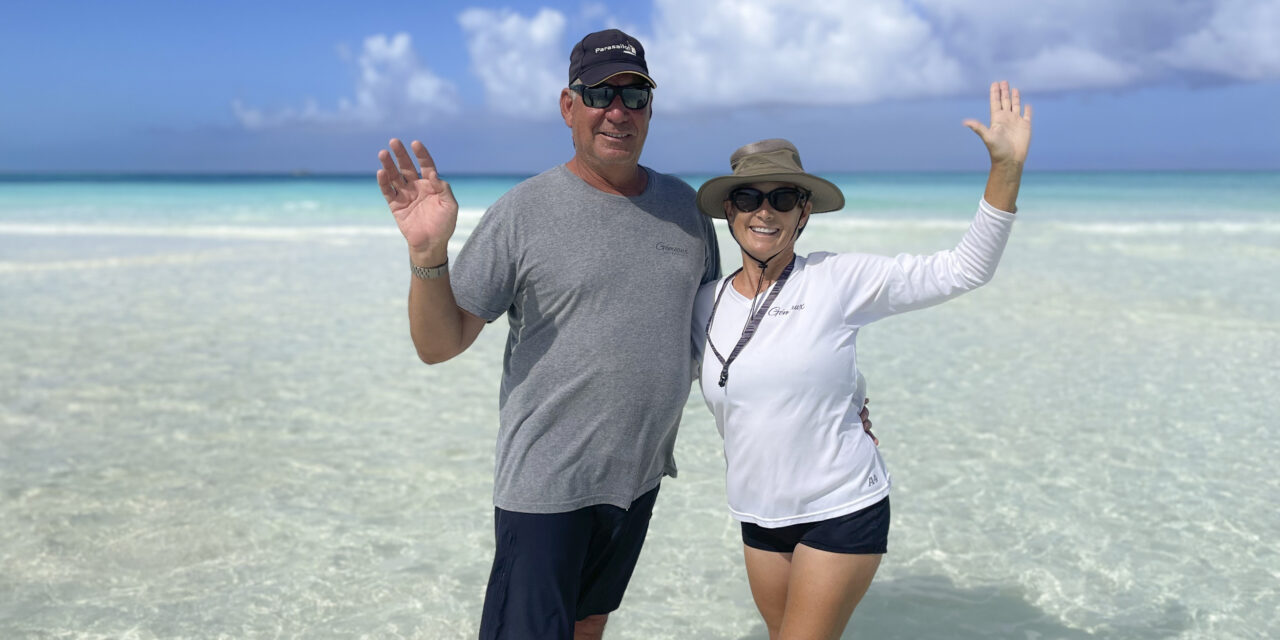
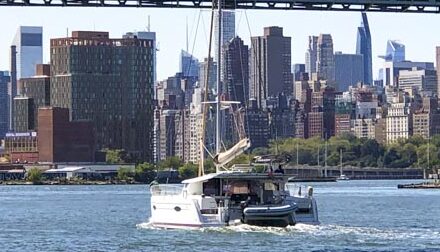
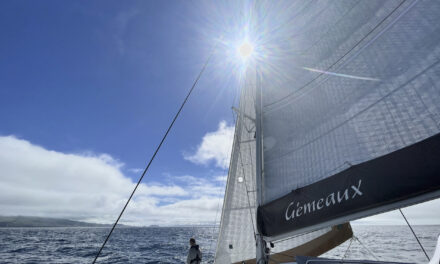
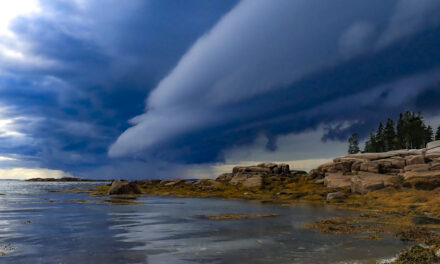
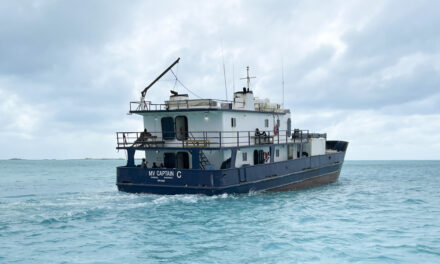

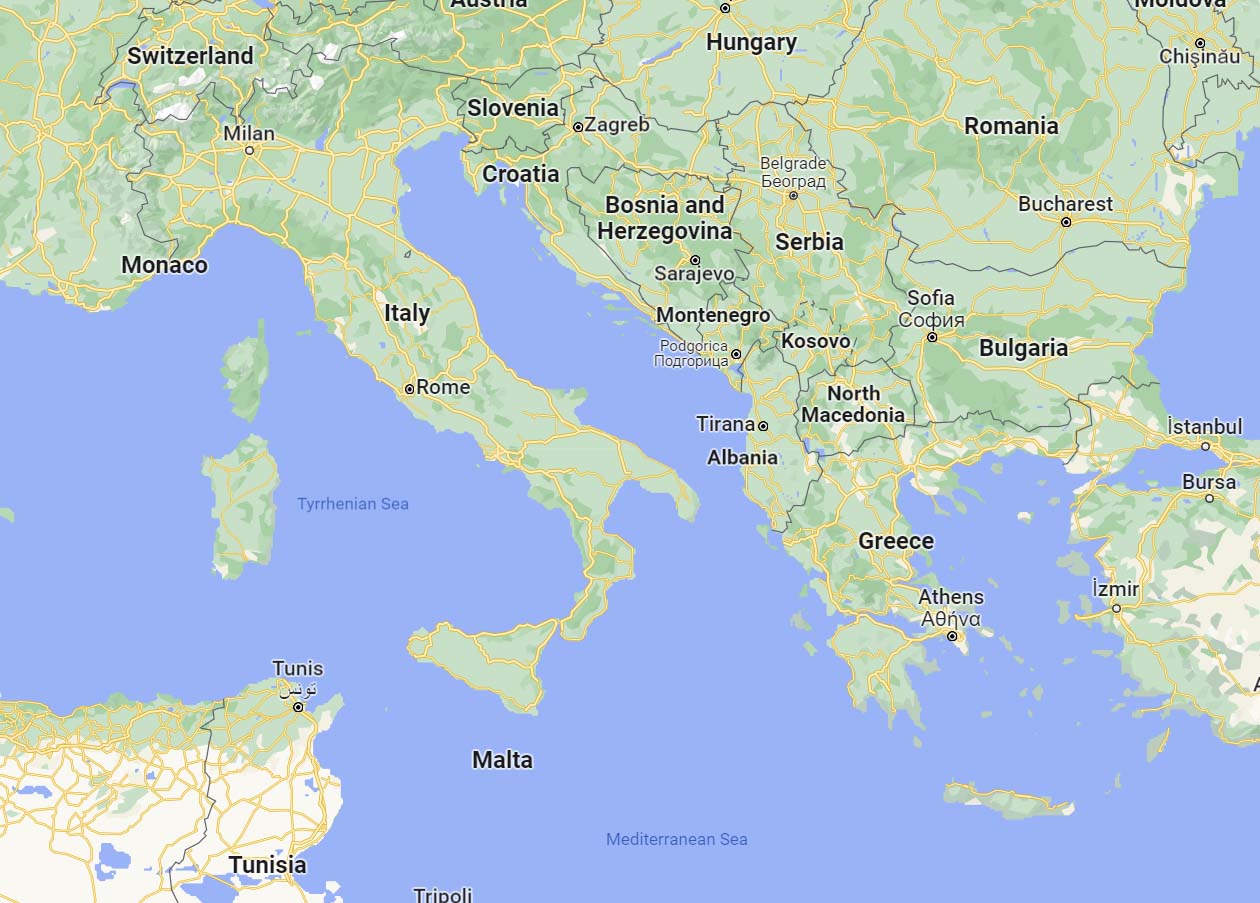
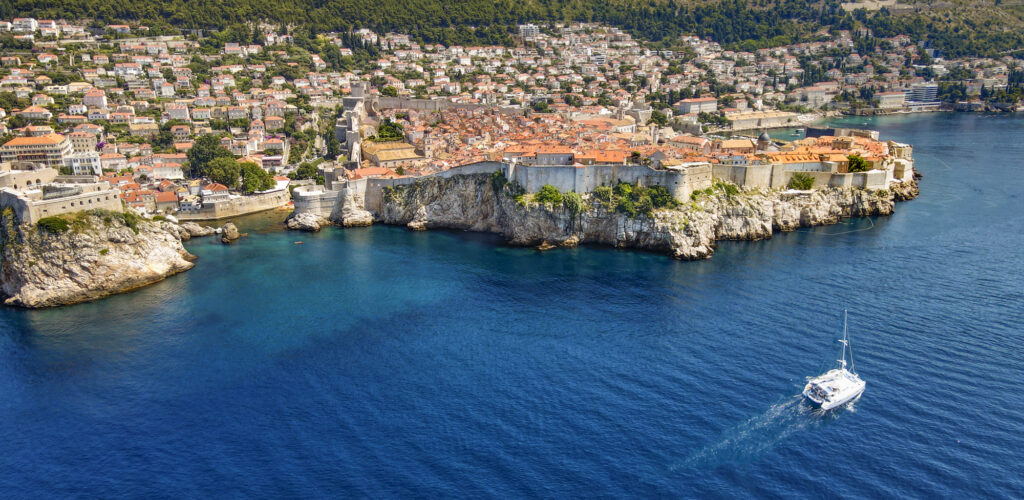
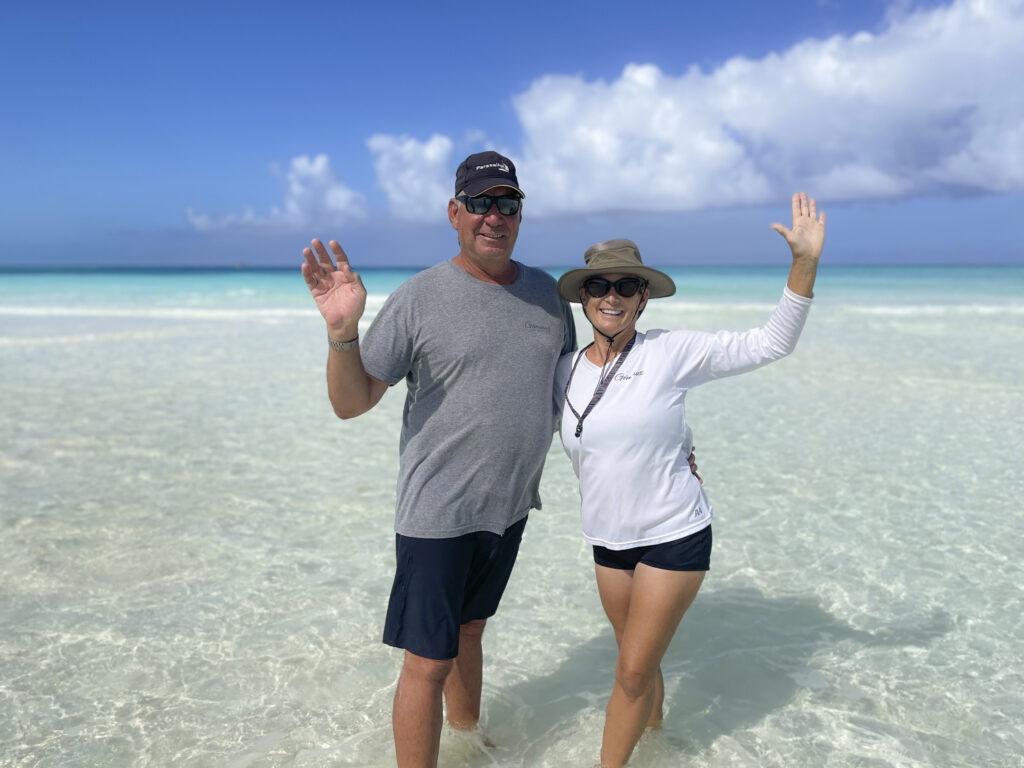
Such beautiful memories and we loved every moment we spent with you there!
Wow, your pictures & prose are making me regret selling SV The Norm… If Rhonda & I could have those experiences again & hang out with you guys a bit, without all the rest that goes with Cruising.
You did hint at our different than your style of Cruising; we were the Cruisers who were known more for wearing out an anchor than an engine! 😉
Looking forward to your Azores Adventure!